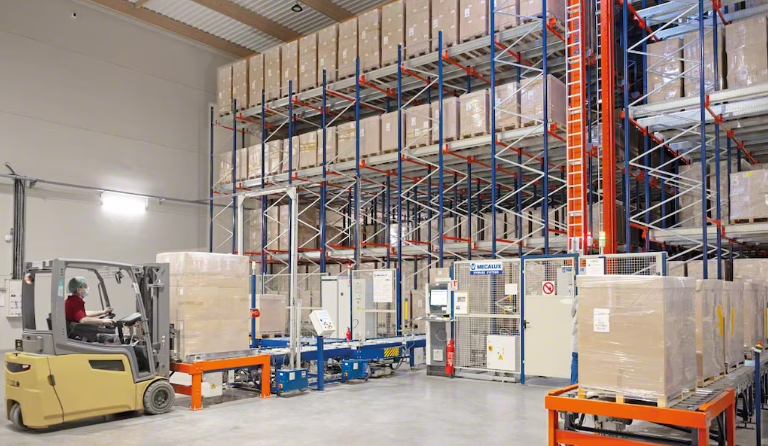Sustainability is a term that has gained a lot of attention in recent years, and for good reason. With the increasing awareness of environmental issues and the need to reduce our ecological footprint, sustainability has become a key consideration in many industries, including construction.
The industrial warehouse sector is no exception. In fact, due to its large-scale operations and significant impact on resources and energy consumption, sustainability is of even greater importance in modern industrial warehouse construction.
What is Sustainability?
Before delving into the role of sustainability in industrial warehouse construction, it’s important to define what exactly we mean by sustainability. In simple terms, sustainability refers to meeting the needs of the present without compromising the ability of future generations to meet their own needs.
This definition encompasses three main pillars: economic, social, and environmental. A truly sustainable project must consider all three aspects, finding a balance between them to ensure long-term viability and success.
The Economic Aspect
From an economic standpoint, sustainability plays a crucial role in modern industrial warehouse construction. By implementing sustainable practices and using energy-efficient technologies, warehouses can reduce their operating costs in the long run.
For example, incorporating renewable energy sources such as solar panels or wind turbines into the design of a warehouse can significantly reduce electricity costs over time. Additionally, using sustainable materials and construction methods can also lead to cost savings.
Moreover, sustainability can have a positive impact on the bottom line by enhancing the overall efficiency and productivity of a warehouse. This includes optimizing workflows, reducing waste, and improving supply chain management.
The Social Aspect
Sustainability also has a social dimension that cannot be ignored in the construction of industrial warehouses. This involves considering the well-being and safety of workers, as well as the impact on local communities.
Sustainable warehouses prioritize the health and safety of their employees by implementing measures to reduce accidents and improve working conditions. They also take into account the welfare of nearby communities by minimizing noise, air, and water pollution during both construction and operation.
Furthermore, sustainable warehouses can contribute to the social and economic development of the surrounding area by creating job opportunities and supporting local businesses.
The Environmental Aspect
As mentioned earlier, sustainability has a strong environmental focus. In industrial warehouse construction, this means reducing the negative impacts on the environment through responsible resource management and energy efficiency.
One key aspect is minimizing carbon emissions during construction and operation. Sustainable warehouses can achieve this by using eco-friendly building materials, implementing energy-saving technologies, and utilizing renewable energy sources.
Sustainability also involves considering the entire life cycle of a warehouse, from construction to demolition or repurposing. This includes reducing waste during construction, designing for longevity and adaptability, and responsibly disposing of materials at the end of a warehouse’s lifespan.
How Can Sustainability be Achieved in Industrial Warehouse Construction?
So, what are some specific measures that can be taken to achieve sustainability in industrial warehouse construction? Here are a few examples:
Design for Energy Efficiency
As mentioned earlier, energy efficiency is a crucial aspect of sustainability. This can be achieved by designing warehouses to optimize natural lighting and ventilation, incorporating insulation to reduce heating and cooling costs, and utilizing renewable energy sources.
In addition, incorporating smart building technologies such as LED lighting and motion sensors can also help reduce energy consumption.
Use Sustainable Materials
Using sustainable materials in construction is another key element of sustainability. This includes using recycled or locally sourced materials, choosing durable and low-maintenance options, and avoiding harmful substances like volatile organic compounds (VOCs).
Implement Green Roofing
Green roofs are becoming increasingly popular in industrial warehouse construction due to their numerous benefits. There are sheet metal fabrication companies that specialize in creating custom green roofs that can provide insulation, reduce stormwater runoff, and help improve air quality.
Consider Lifecycle Costs
When making decisions about construction materials and methods, it’s important to consider the entire lifespan of a warehouse. This includes not only initial costs but also maintenance, energy, and disposal costs over time.
Implement Green Building Certifications
There are various green building certifications available that provide guidelines and standards for sustainable construction. Examples include LEED (Leadership in Energy and Environmental Design) and BREEAM (Building Research Establishment Environmental Assessment Method). These certifications can help ensure that warehouses meet rigorous environmental, social, and economic criteria.
Incorporate Water Management Strategies
Water conservation is also an important aspect of sustainability. Warehouses can incorporate water-saving technologies such as rainwater harvesting, low-flow fixtures, and water recycling to reduce their impact on local water resources.
Consider the Surrounding Environment
Finally, sustainability in industrial warehouse construction also involves considering the surrounding environment. This includes preserving natural habitats, minimizing disturbance to wildlife during construction, and implementing landscaping to improve air quality and support biodiversity.
Read Also: Safety First: Ensuring Workplace Security
Conclusion
In conclusion, sustainability plays a crucial role in the construction of industrial warehouses. It encompasses economic, social, and environmental aspects and requires careful consideration of various factors throughout the entire construction process.
By implementing sustainable practices and technologies, warehouses can not only reduce their impact on the environment but also improve their bottom line and contribute to the well-being of employees and surrounding communities. With a growing focus on sustainability in all industries, industrial warehouses need to prioritize sustainability in their construction processes. So let’s join hands and work towards a more sustainable future!

